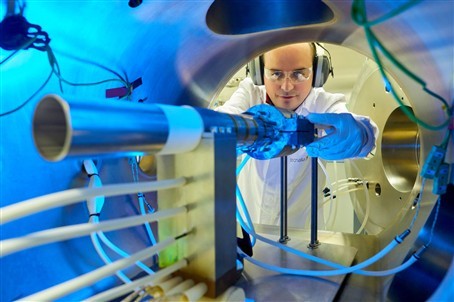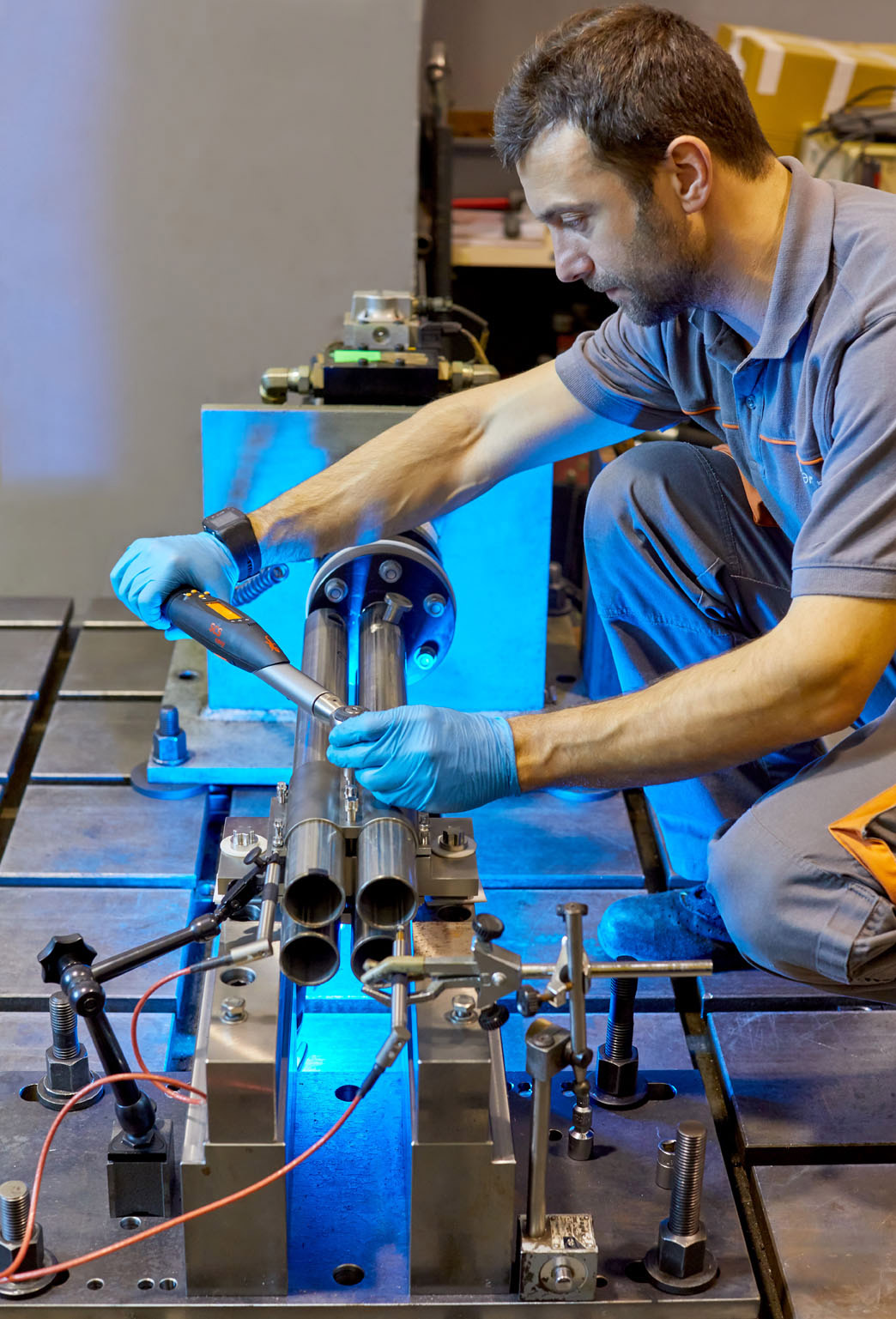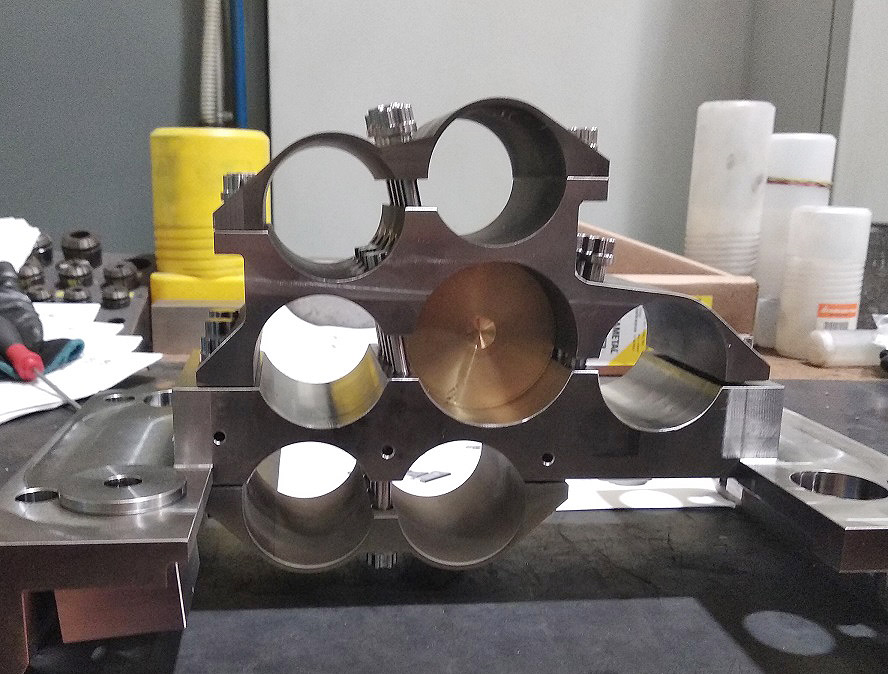Prototypes for ITER In-Vessel equipment completed

Getting ready to perform thermal tests in order to calculate the heat conductance between the pipe and the support. The equipment has been manufactured by TCCP and the tests have been carried out by Tecnalia. The works are financed by F4E, responsible for the ITER Cooling Blanket Manifold.
A blanket of 440 modules covering a surface of 600 m² will protect the inner walls of the ITER Vacuum Vessel and the Toroidal Field coils from the scorching temperatures of the fusion reaction and the high-energy resulting from it.
Technically speaking, the blanket is classified as a plasma facing component because it will be directly exposed to the hot gas. Beneath its metallic blocs, a network of pipes branching into several openings (manifold) will deliver pressurised water to cool them down. Inside this structure, measuring roughly 9 m, water will flow to remove up to 736 MW of thermal power. Think of it like arteries of water embracing the equipment that contains the fire of the ITER project – the burning plasma.
Since the final design review of the blanket manifold system, there have been concerted efforts to develop a more simple and practical design without compromising on its potential. Don’t be fooled by the large size of the vacuum vessel and its surrounding equipment- there is not much space in the machine. The tight assembly tolerances of this large metallic piping structure is also an issue. Any additional components must be compact and light so as not increase excessively the total load. “Space, vacuum conditions and high temperatures are important factors that come to play at the stage of fabrication,” explains Georges Dellopoulos, F4E In-Vessel Project Team, following the progress of this component that Europe is responsible for. “But above all, we need to be practical, reasonable and creative so that we end up with a piece of equipment that fits and works well with the ITER environment,” he adds.

Therefore, engineers have been working on a cooling manifold system bearing in mind the above characteristics. On top of that, they are taking into consideration issues relating to shielding and the short distance of 1 m in between the various support structures which will sustain the manifold and get bolted on the vacuum vessel. F4E has invested approximately 350 000 EUR in developing the first prototypes of the support structures for the blanket manifold by signing a contract with TCPP and another with Leading. Since September, the prototypes have been with Tecnalia to go through a series of mechanical and thermal tests. Following their successfully completion, F4E in collaboration with ITER Organization are currently conducting further analytical work regarding the final design.
